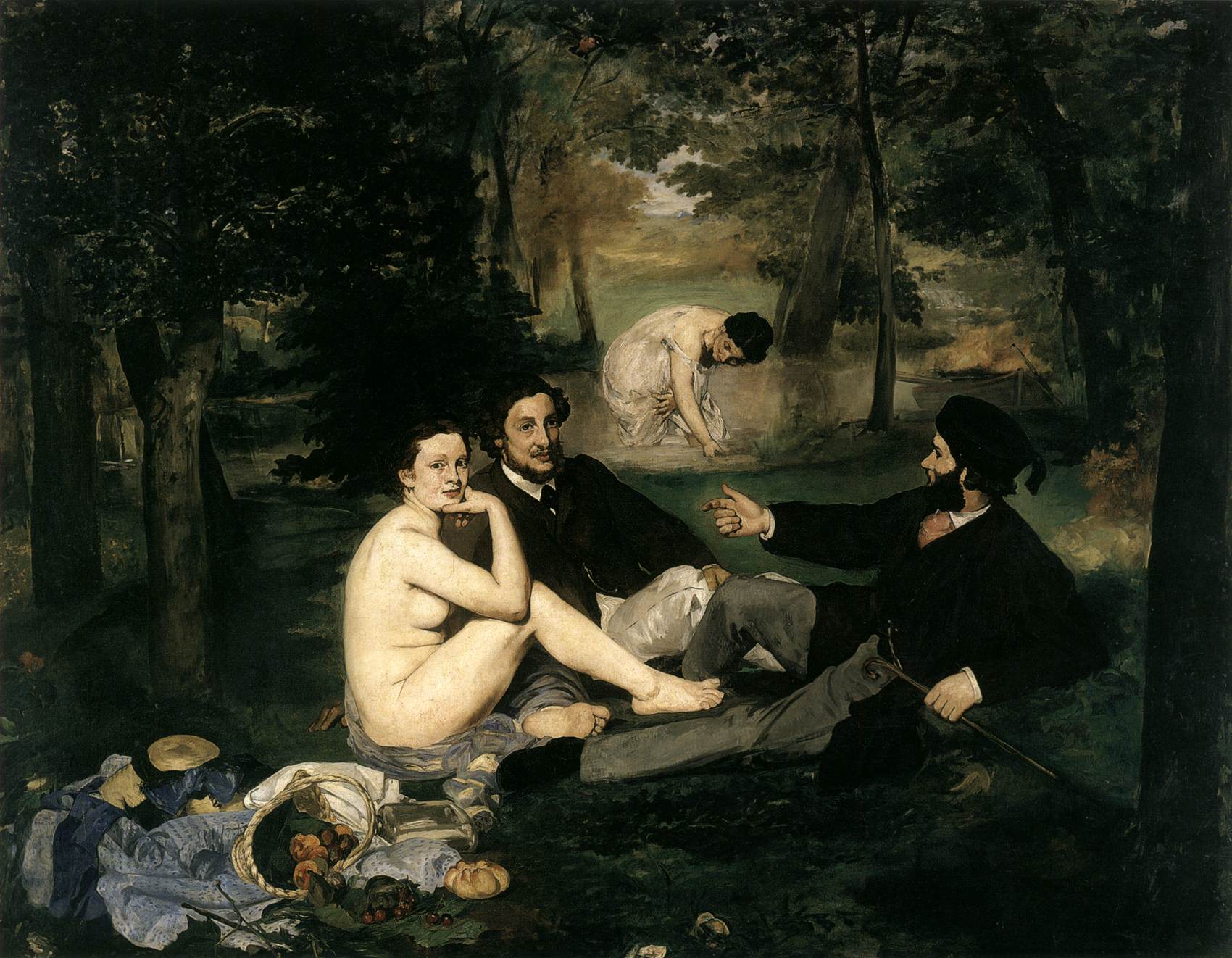Description
The painting "Luncheon on the Grass" (Le Déjeuner sur l'herbe) by Edouard Manet is an iconic work that has been the subject of controversy and admiration since its creation in 1863. This piece of art is considered one of the most important works of the Impressionist movement, although his artistic style is rather realistic.
The composition of the painting is somewhat unusual, as it depicts two naked men and a woman in a forest, surrounded by exuberant nature. The woman, who is seated in the center of the painting, looks directly towards the viewer, while the two men converse with each other. The composition is very symmetrical, with the characters arranged in a perfect triangle.
Color is another interesting aspect of this painting. Manet used a very bright and contrasting color palette, which gave the work a very modern look for its time. The green and blue tones of nature mix with the pink and golden skin tones of the characters, creating a very sensual atmosphere.
The story behind the painting is quite interesting as well. When Manet presented this work at the Paris Salon in 1863, it was rejected by critics and the public for its scandalous content. The nudity of the characters and their relaxed attitude was considered a provocation by Manet, who was challenging the norms of the society of the time.
In addition, there are some little-known aspects of this work. For example, it is said that Manet was inspired by a Renaissance painting by Giorgione to create this work. It is also believed that the characters in the painting are friends and relatives of the artist, and that he himself was portrayed in the male figure seated on the ground.
All in all, "Luncheon on the Grass" is a fascinating work of art that combines elements of realism and impressionism to create a unique and provocative image. Its composition, color and subject matter have been the subject of analysis and debate for more than a century, and it remains one of the most important works in the history of art.

